
How to save on housing? With Hager intelligent electrical installations!
Modern living no longer revolves solely around stoves that provided food, hot water, and, above all, warmth for the entire family. We are no longer even talking about a time when the whole group huddled around one fire. Today's housing requirements are much more demanding, which is evident in the number of technologies each of us has at home. Today, it's not just about surviving the winter but also about a certain comfort, which from today's perspective is more of a minimum standard. To that end, a whole range of different manufacturers offers various solutions and competes in piling on more and more features. The truth is that the overwhelming majority of these options are ultimately of no use to you, and only a tiny percentage of users feel the need to continuously play with their technologies and fine-tune their settings.
And this brings us to the entire issue, namely the basic philosophy. What do I, as a property owner, actually require from these technologies? What should they bring me? How much do I want to participate in the processes within the house and continually intervene? From these questions, the design of the systems, the technologies employed, and the overall conception of the house arise.
Let us say that our dream goal is a house completely independent of external networks, whether concerning gas, electricity, or water from municipal sources. If we set aside passive technologies, such as quality insulation, windows, and doors, we will primarily focus on the active ones. The basic ones will include heating the house, lighting, cooking, heating utility water, ventilation, and shading. Therefore, we must find the optimal balance between energy gain and consumption. Additionally, we must ensure that we have enough energy available when we need it.
We will not delve into individual technologies in detail now, but rather their integration into a unified home control system. By not addressing each part separately and choosing a single overarching solution, we can achieve interesting savings even in the phase of acquiring this unified control system. Centralized control is typically cheaper, and only one application is needed to control the house. It is hard to label homes as user-friendly when the owner acquires a different control system from each supplier and has to switch between perhaps eight different applications. Nonetheless, such homes can be found, and there are quite a few of them. If you don't want to drown in a sea of remote controls and control panels, consider a unified control system for the house, preferably based on the globally recognized KNX platform – this platform is used in intelligent systems by manufacturers such as Hager. The KNX system has the advantage of being a worldwide format (standard) involving hundreds of manufacturers. You can easily replace individual products among each other if, for example, you are looking for different features that your current supplier doesn't offer, or in the event that one of them unexpectedly stops supplying to the market. Nowadays, for instance, blinds are already being manufactured with built-in integrated KNX bus, as well as gate drives or gas or other boilers, or air conditioning units. Even for products where the KNX bus is not their automatic component, there are various interfaces to connect these appliances to KNX-based systems.
It is hardly defendable these days to argue for acquiring smart electrical installations from a manufacturer that does not use any globally recognized standard but develops its own – and unfortunately completely autarkic – control system. However, if not all the mentioned arguments are your priority, you can of course utilize other systems, which are often simpler and cheaper to acquire; however, their main disadvantage tends to be a certain limitation of products and dependence on a single specific manufacturer. Since these are proprietary systems of a single manufacturer, their absence from the market, change in focus, or employed technology can spell many problems for your house in the future.
By connecting to air conditioning or heating, you can set the desired temperature only when you really need it through a system installation. This means not heating or cooling unnecessarily when the house is empty, and all its occupants are at work or school, or perhaps on vacation for several days. A particularly interesting connection is with window contacts, where an open window means a stop for heating and cooling so that you don’t waste your money out the window. If air quality sensors are installed in the house, the system will automatically take care of air exchange through heat recovery units, thus ensuring better and healthier breathing, less fatigue, and improved sleep quality.
A separate chapter in savings is controlling lighting – not only is the correct selection of light sources crucial, but also their effective management. We are not just talking about operational savings but also about health. It no longer surprises anyone that you can change both the intensity of the light and its color temperature. Both home lighting and office lighting can not only suitably complement natural daylight, for example, in places further from windows but also naturally mimic the color temperature according to the time of day. Thus, during the day, the intensity changes according to the need in a specific office or room, and at the same time, the temperature of the light also changes. That temperature ranges around 5000-5500 K during the day and smoothly transitions to a nighttime color around 3200-3500 K in the evening, which corresponds to the pleasant light of a bulb. This naturally connects to the "warmth" of cave fire. Thus, exactly according to our ingrained and natural biorhythms, which has a very favorable effect both on our work results if we utilize this in office spaces and on overall mental well-being. We can also minimize issues related to poor sleep caused by so-called "blue light," about whose harmfulness there has been significant discussion in recent years.
A small but very effective assistant for the peace of our mind and our wallet is the function of automatically turning off all forgotten switched-on lights or selected sockets when leaving the house, which only requires a longer absence of movement in the rooms, or a command from an activated alarm that you turn on when leaving. It probably does not need to be emphasized what an advantage it is to have individual technologies interconnected, allowing you to switch the heating to a state of maintaining a minimum temperature, turn off the air conditioning or ventilation, and so on in the same way. Often, gas to the fireplace is turned off, outlets connected to devices in standby modes are disconnected, and so on. You can turn off the fountain in the pond, the water supply to the house, and everything that could unnecessarily raise energy consumption during your absence or cause some damage in case of a fault.
Heating can also be controlled by individual circuits (e.g., underfloor heating) or individual radiators. You can thus control the temperatures in individual rooms separately, precisely according to their usage. Both wirelessly and via the bus. The same applies to heating cables or other heating media. Why heat a student room to a comfortable 22°C for the entire time when our student is at the dormitory during the week and only arrives on Friday evening? Here, maintaining a temperature of perhaps 19°C will suffice, with the room prepared (heated) to 22°C before their arrival, until their departure on Sunday.
When you add up all the small savings and appropriately combine the installed technologies, you will find that, for example, by connecting PV systems with a battery, along with solar panels and analyzing the behavior of the house’s occupants, you may come to the conclusion that with a few minor adjustments in behavior and adapting to the conditions, your house will be very minimally dependent on external energy suppliers. Instead of a main circuit breaker in front of the electricity meter with the now common value of 25A/3F, you only need 10 (16A)/3F. This can mean a savings of around 40% on the circuit breaker payment (not on the total invoice, but on one of the three components of the total energy cost), depending on the distributor and rate.
Furthermore, thanks to monitoring the house's consumption in individual circuits, you can gain interesting insights into the family’s behavior and, above all, what contributes the most significant share of the invoiced amount in your bills. This allows you to effectively respond to these findings when searching for further savings, which will again be another step towards your independence from the outside world. At the symbolic peak of the iceberg, we can imagine houses that we already have in the Czech Republic, which do not have any energy supplies at all. They are completely energy self-sufficient, obtaining all their energy from the sun, wind, and in extreme cases from an external generator powered by diesel.
From the above, it follows that modern management of processes for individual technologies in the house can bring us, and in the case of correct design, it indeed brings, significant savings on the payments for the operation of the house itself. Additionally, depending on the technologies used, it will not only be a financial benefit but also a health benefit for the whole family, as we have demonstrated, for instance, in air quality, stable temperature, or proper lighting in the house.
www.hager.cz
And this brings us to the entire issue, namely the basic philosophy. What do I, as a property owner, actually require from these technologies? What should they bring me? How much do I want to participate in the processes within the house and continually intervene? From these questions, the design of the systems, the technologies employed, and the overall conception of the house arise.
Let us say that our dream goal is a house completely independent of external networks, whether concerning gas, electricity, or water from municipal sources. If we set aside passive technologies, such as quality insulation, windows, and doors, we will primarily focus on the active ones. The basic ones will include heating the house, lighting, cooking, heating utility water, ventilation, and shading. Therefore, we must find the optimal balance between energy gain and consumption. Additionally, we must ensure that we have enough energy available when we need it.
We will not delve into individual technologies in detail now, but rather their integration into a unified home control system. By not addressing each part separately and choosing a single overarching solution, we can achieve interesting savings even in the phase of acquiring this unified control system. Centralized control is typically cheaper, and only one application is needed to control the house. It is hard to label homes as user-friendly when the owner acquires a different control system from each supplier and has to switch between perhaps eight different applications. Nonetheless, such homes can be found, and there are quite a few of them. If you don't want to drown in a sea of remote controls and control panels, consider a unified control system for the house, preferably based on the globally recognized KNX platform – this platform is used in intelligent systems by manufacturers such as Hager. The KNX system has the advantage of being a worldwide format (standard) involving hundreds of manufacturers. You can easily replace individual products among each other if, for example, you are looking for different features that your current supplier doesn't offer, or in the event that one of them unexpectedly stops supplying to the market. Nowadays, for instance, blinds are already being manufactured with built-in integrated KNX bus, as well as gate drives or gas or other boilers, or air conditioning units. Even for products where the KNX bus is not their automatic component, there are various interfaces to connect these appliances to KNX-based systems.
It is hardly defendable these days to argue for acquiring smart electrical installations from a manufacturer that does not use any globally recognized standard but develops its own – and unfortunately completely autarkic – control system. However, if not all the mentioned arguments are your priority, you can of course utilize other systems, which are often simpler and cheaper to acquire; however, their main disadvantage tends to be a certain limitation of products and dependence on a single specific manufacturer. Since these are proprietary systems of a single manufacturer, their absence from the market, change in focus, or employed technology can spell many problems for your house in the future.
Energy Savings in Your Home
By unifying control, you have all processes in your house under control, allowing you to very advantageously connect individual functions to achieve the best results. For example, a weather station provides information about the sun's position and its brightness, and the system drops the blinds on the illuminated side so that as much light as possible flows into the room while also preventing the room from overheating unnecessarily. Especially during this year's hot summer, this simple method could save a considerable amount of money needed for cooling the house.By connecting to air conditioning or heating, you can set the desired temperature only when you really need it through a system installation. This means not heating or cooling unnecessarily when the house is empty, and all its occupants are at work or school, or perhaps on vacation for several days. A particularly interesting connection is with window contacts, where an open window means a stop for heating and cooling so that you don’t waste your money out the window. If air quality sensors are installed in the house, the system will automatically take care of air exchange through heat recovery units, thus ensuring better and healthier breathing, less fatigue, and improved sleep quality.
A separate chapter in savings is controlling lighting – not only is the correct selection of light sources crucial, but also their effective management. We are not just talking about operational savings but also about health. It no longer surprises anyone that you can change both the intensity of the light and its color temperature. Both home lighting and office lighting can not only suitably complement natural daylight, for example, in places further from windows but also naturally mimic the color temperature according to the time of day. Thus, during the day, the intensity changes according to the need in a specific office or room, and at the same time, the temperature of the light also changes. That temperature ranges around 5000-5500 K during the day and smoothly transitions to a nighttime color around 3200-3500 K in the evening, which corresponds to the pleasant light of a bulb. This naturally connects to the "warmth" of cave fire. Thus, exactly according to our ingrained and natural biorhythms, which has a very favorable effect both on our work results if we utilize this in office spaces and on overall mental well-being. We can also minimize issues related to poor sleep caused by so-called "blue light," about whose harmfulness there has been significant discussion in recent years.
A small but very effective assistant for the peace of our mind and our wallet is the function of automatically turning off all forgotten switched-on lights or selected sockets when leaving the house, which only requires a longer absence of movement in the rooms, or a command from an activated alarm that you turn on when leaving. It probably does not need to be emphasized what an advantage it is to have individual technologies interconnected, allowing you to switch the heating to a state of maintaining a minimum temperature, turn off the air conditioning or ventilation, and so on in the same way. Often, gas to the fireplace is turned off, outlets connected to devices in standby modes are disconnected, and so on. You can turn off the fountain in the pond, the water supply to the house, and everything that could unnecessarily raise energy consumption during your absence or cause some damage in case of a fault.
Heating can also be controlled by individual circuits (e.g., underfloor heating) or individual radiators. You can thus control the temperatures in individual rooms separately, precisely according to their usage. Both wirelessly and via the bus. The same applies to heating cables or other heating media. Why heat a student room to a comfortable 22°C for the entire time when our student is at the dormitory during the week and only arrives on Friday evening? Here, maintaining a temperature of perhaps 19°C will suffice, with the room prepared (heated) to 22°C before their arrival, until their departure on Sunday.
When you add up all the small savings and appropriately combine the installed technologies, you will find that, for example, by connecting PV systems with a battery, along with solar panels and analyzing the behavior of the house’s occupants, you may come to the conclusion that with a few minor adjustments in behavior and adapting to the conditions, your house will be very minimally dependent on external energy suppliers. Instead of a main circuit breaker in front of the electricity meter with the now common value of 25A/3F, you only need 10 (16A)/3F. This can mean a savings of around 40% on the circuit breaker payment (not on the total invoice, but on one of the three components of the total energy cost), depending on the distributor and rate.
Furthermore, thanks to monitoring the house's consumption in individual circuits, you can gain interesting insights into the family’s behavior and, above all, what contributes the most significant share of the invoiced amount in your bills. This allows you to effectively respond to these findings when searching for further savings, which will again be another step towards your independence from the outside world. At the symbolic peak of the iceberg, we can imagine houses that we already have in the Czech Republic, which do not have any energy supplies at all. They are completely energy self-sufficient, obtaining all their energy from the sun, wind, and in extreme cases from an external generator powered by diesel.
From the above, it follows that modern management of processes for individual technologies in the house can bring us, and in the case of correct design, it indeed brings, significant savings on the payments for the operation of the house itself. Additionally, depending on the technologies used, it will not only be a financial benefit but also a health benefit for the whole family, as we have demonstrated, for instance, in air quality, stable temperature, or proper lighting in the house.
www.hager.cz
The English translation is powered by AI tool. Switch to Czech to view the original text source.
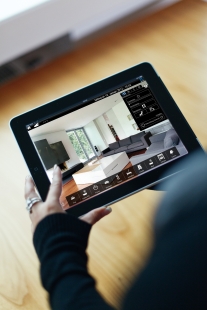
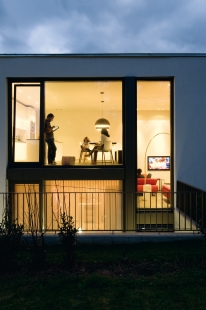

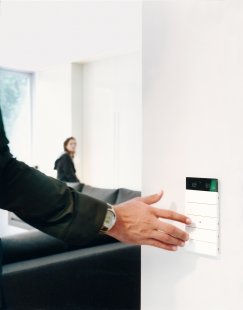
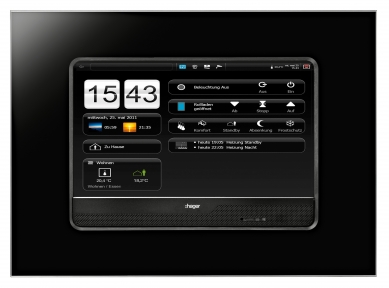

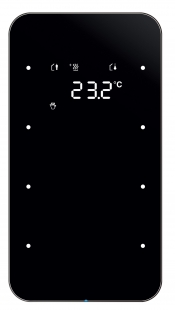
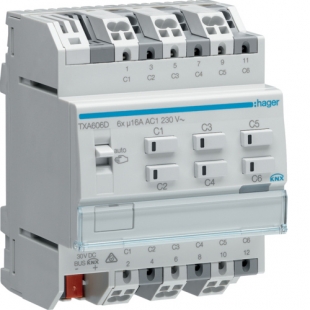
0 comments
add comment
Related articles
0
16.12.2020 | What does it look like in the first gin distillery in Prague?
0
04.11.2020 | <ultrathin switches berker R.8: Less is more</ultrathin switches berker R.8: Less is more>
0
19.10.2020 | Selection of switches and electrical installation: trivial or not?
0
09.10.2020 | Apartment with a view of the Vltava
0
17.08.2020 | Harmony of neutral colors in an apartment in Vinohrady
0
14.07.2020 | Dreamy House of Franz Kafka
0
24.03.2020 | Byt K Brno – a symphony of wood and concrete in a new residential complex
0
25.02.2020 | Flat with a Bay Window: Small Big Apartment in the Heart of Prague's Old Town
0
09.12.2019 | Distinct brass accents in an apartment for a young student
0
06.11.2019 | Perfectly more than you could imagine: Berker illuminated switches
0
18.10.2019 | The celebration of 100 years of Berker switches and the Bauhaus school took place at Winternitz Villa
0
04.09.2019 | New Berker R.8 switches: Because less is more
0
15.08.2019 | Switches Hager Manufaktura: new materials in exclusive small series
0
13.06.2019 | Classic switches by the great masters
0
06.11.2018 | World premiere at Designblok 2018: Rony Plesl designed unique glass switches for the switch manufacturer Hager
0
21.03.2018 | Design like grandma's vs. technology for the 3rd millennium
0
03.11.2017 | Robust Berker Q.7 – a new arrival among switches in the Czech market
0
01.05.2016 | Hager Manufacturing – every switch is a masterpiece!
0
02.12.2015 | Berker.Net – truly very innovative electrical installations











